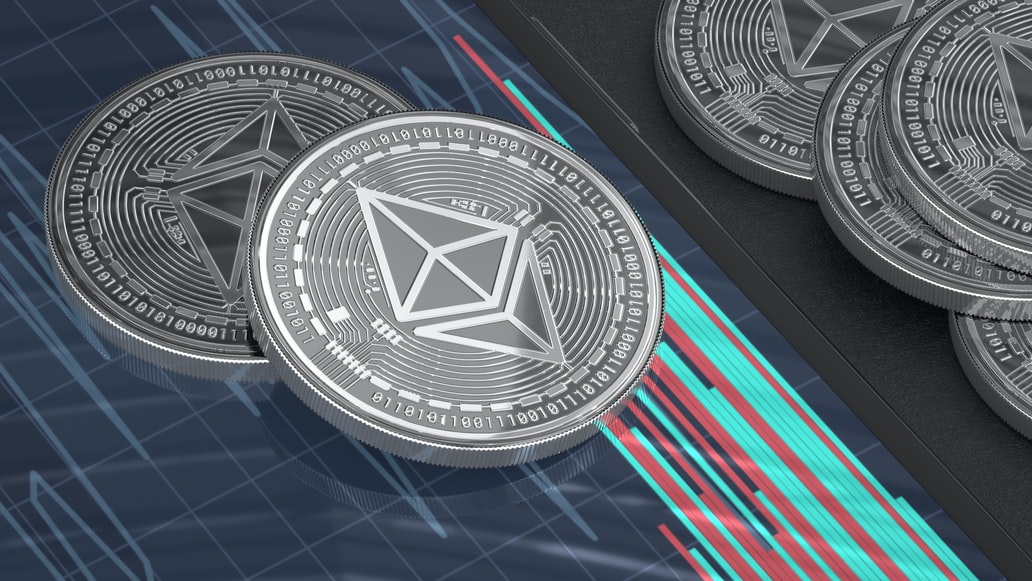The blockchain world is too broad, and you may need more than a day to master the ins and outs. Though you don’t have to be an expert in crypto or other things related to the blockchain, you should at least have a basic understanding of what happens in the space. One instance is how blockchain technology works. From blockchain technology developments–Bitcoin to Ethereum and Ethereum to Solana, we can learn that blockchain can offer so much more to people. Whether you’re a developer, a job seeker, an artist, or an investor, the blockchain space is a huge bandwagon for you to explore. To help you jumpstart your blockchain exploration, let’s help you comprehend how Ethereum and Solana differ from each other.
What is Ethereum?
Ethereum is an open-source blockchain technology that allows anyone to build a decentralised application. Ethereum is the underlying technology of most dApps on the blockchain market. Some of the most recognised ETH-based dApps are OpenSea, MakerDAO, and Axie Infinity.
What is Solana?
On the other hand, Solana is like a different version of Ethereum. However, it’s more scalable fast and offers lower gas fees. If Ethereum has OpenSea–the top NFT marketplace in the blockchain market, Solana has Magic Eden and Solanaart. In terms of decentralised autonomous organisation, Solana has Honey Dao.
Main Differences Between Ethereum and Solana
Now, you may be asking and searching the internet for why someone would want to use Solana instead of Ethereum or vice versa. Let’s dive deep into their main differences and why investors and developers think that one of them is better than the other.
Solana is more scalable than Ethereum.
Some people put a brand on Solana as the “Ethereum Killer.” Though any reliable information or study hasn’t backed this up, we can see from Solana’s scalability that it’s indeed better than Ethereum. Solana can process networks as fast as 2.34 seconds, while Ethereum can do it in 13 seconds. Solana can process multiple transactions in 13 seconds when Ethereum can only accommodate one. So how does scalability work?
Proof of Work and Proof of Stake
When it comes to a consensus, Ethereum and Solana use different systems. Ethereum, right now, uses Proof of Work–the process of mining blocks using high-tech computers. Solana uses Proof of Stake–the process of mining blocks using staking. To give you a quick overview of these mechanisms, Proof of Work (PoW) is effective, but it consumes too much energy. This is one main reason why it has some controversies in terms of being not environmentally friendly. Plus, PoW makes mining expensive. Users bear the expensive gas fees since it uses high-tech computers to mine new blocks on the blockchain. For instance, if you buy NFTs during peak hours, you will likely spend $200-300 worth of ETH as gas fees, excluding the amount of the NFT you are buying. If transactions are done outside peak hours, gas fees can fall to $30-40. Still, gas fees are more than the worth of some NFTs listed on the marketplace.
Proof of Work vs. Proof of Stake On the one hand, proof of Stake (PoS) uses staking to mine new blocks. Staking is where participants, known as “validators,” stake their cryptocurrencies in the network. All the staked cryptocurrencies are combined into a staking pool. Once the pool or the validators are selected, they get rewarded based on the amount of crypto they stake. Compared to PoW, PoS is much more affordable and consumes less energy. However, both PoW and PoS have downsides. So, we can’t tell that PoW is better than PoS or the other way around since they have pros and cons. It all boils down to the goals of the developers and investors when choosing between Ethereum and Solana.
Usage of technology and its coins
Despite the expensive gas fees, more decentralised applications and coins are launched through smart contracts offered by Ethereum. Ethereum’s native coin is ETH, while Solana’s is SOL. Since Solana is relatively new, Ethereum has more users, making it a big blockchain network next to Bitcoin. This is partly because the network has a proven track record, and the hiccups came in after it became congested, which is in line with the growing popularity of blockchain. ETH’s supply is also unlimited. The main reason behind this is that the token is supposed to support EVM computations and to ensure that EVM always operates.
Conversely, Solana is still new yet powerful as it offers unique advantages. For example, SOL is scarce, making the token even more valuable since holders can HODL their SOL tokens and wait for the value to increase further before they sell. Therefore, it’s a store of value for many.
The network’s purpose
Ethereum’s purpose is to provide a safe and solid network for developers where they can build their decentralised applications. It also allows developers and users to use its smart contract functionality to adjust the usability of their apps and crypto. Meanwhile, Solana’s purpose is to give users improved responsiveness and throughput, which Ethereum couldn’t provide, knowing that it is now congested. So, developers can go to Solana if they want a faster network and lower fees. It’s also worth noting that Ethereum is migrating to Proof of Stake. It will soon release its ETH V2, which will solve the current bottlenecks and hiccups on the network.
Conclusion–which is better?
For now, the answer would depend on the users and their goals. Both these blockchain technologies have something big to offer to people planning to venture into the blockchain market. It’s also a great experience to explore both networks. Again, you don’t need a big chunk of money to observe and experience the services offered by these networks. As of this writing, Ethereum is still the second-largest network next to Bitcoin, and Solana sits at number eight.















